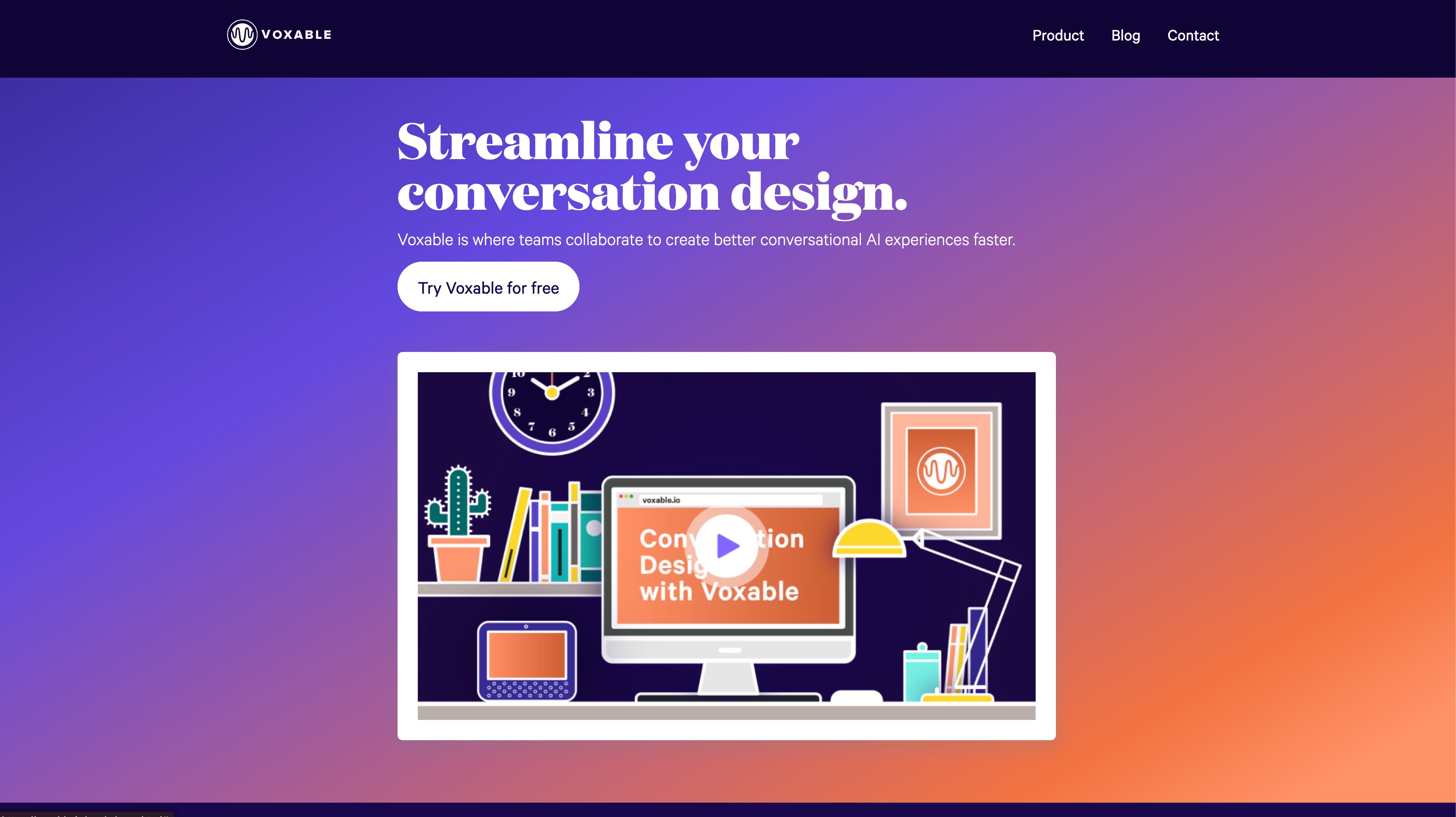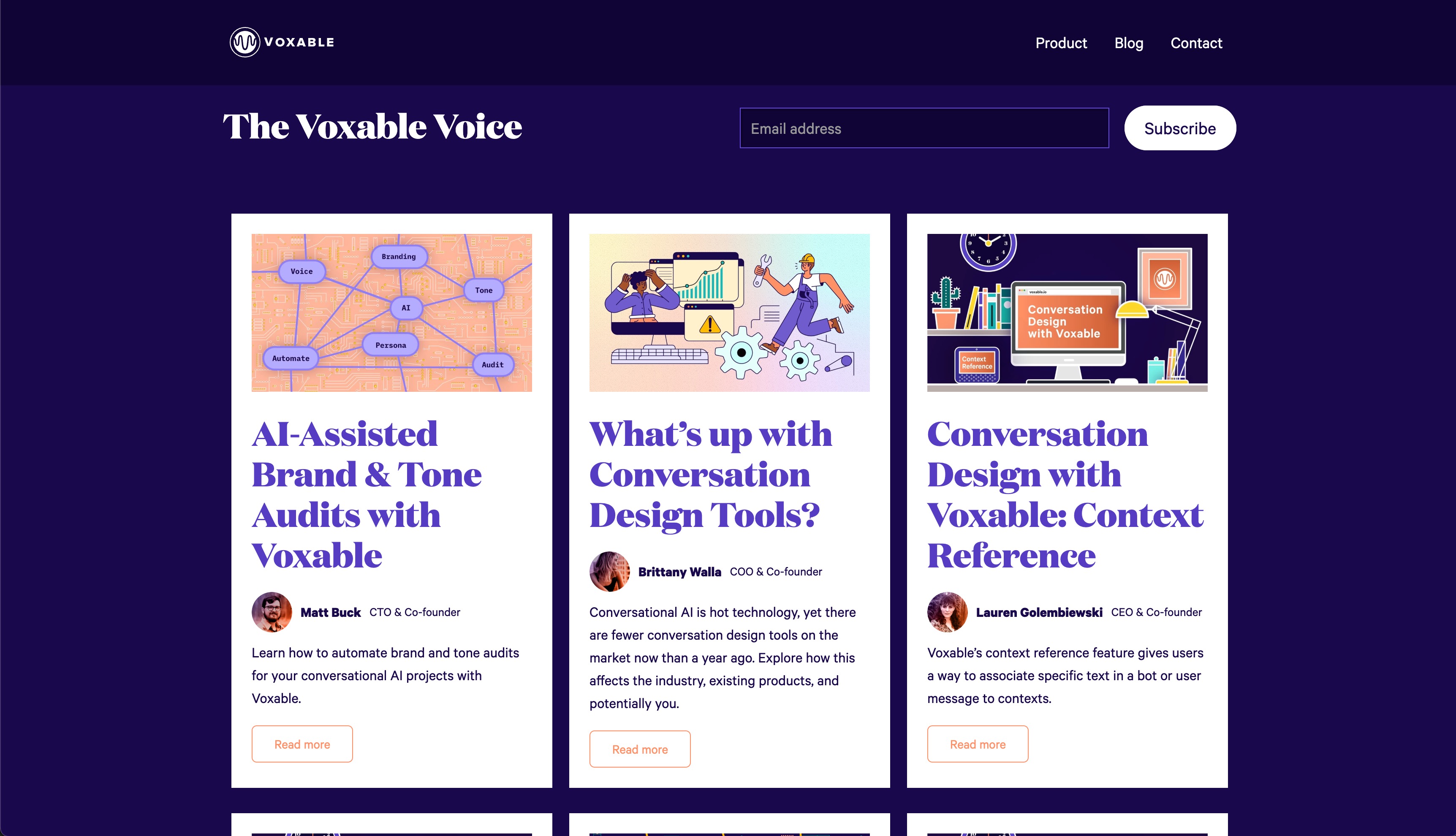.jpg)
Voxable started out as a small agency focused on exploring the application of AI, especially conversational and voice systems. We helped innovative startups and Fortune 100 enterprises create AI-driven experiences such as AT&T, Burner, GoDaddy, Keller Williams, Overstock.com, and SXSW.
I was responsible for conversation design and strategy which included analyzing client data, performing UX studies, creating conversational flow diagrams, writing scripts, and designing the conversational UI components.
I created our educational content we sold through workshops which eventually evolved into our Introduction to Conversational Design online course.
During our time as conversational AI consultants, we were constantly frustrated by the tools available to teams working on this technology. The industry was collectively stuck fitting the wrong tools into a conversational AI production process, costing teams time, money, and poor UX. We were sick of using and teaching this broken process to our clients and students, so we built Voxable to serve all the conversation design teams struggling like us.
I established the Voxable brand while Voxable was a consultancy, and then evolved it as we pivoted into a product startup so the fonts, imagery, and icons were geared toward our enterprise team use case.

The pivot into the product startup also required us to build a new website. After designing the site in Figma, I was eager to offload the development work to another team to free me up to focus on the product. We contracted with an external development team to build our Webflow site. Unfortunately, the external team was not able to deliver our design vision with clean, reusable components we knew we’d need to iterate on the product and marketing. I ultimately took over the development and created the website complete with components and CMS collections.
I created an maintained a design system first in Figma which I translated to an internal page in Webflow that documented our components. The compontentized design approach and documentation made ongoing development and iteration easy and fast. I also integrated the site into Hubspot and Mailchimp via the Make automation platform to manage customers and contacts and deliver content.

While we shut down Voxable early 2023, you can view a static version of the website today at voxable.io. Some of the interactions and JS animations are a bit wonky from when we exported from Webflow.
I performed UX research in the form of contextual inquiry interviews with conversation designers in the industry and tested various versions of the Voxable product with users. I synthesized the user research into new product feature designs and product priorities. I also managed and audited all user feedback to create the product strategy and update the roadmap.
I designed the Voxable MVP and continued to iterate on the product and its design as we took Voxable to market. I defined the key features, designed the UX flow, created the UI components, and composed them into screens that defined the app functionality. I designed the following features and built the design system that defines the UI.
Script Editor
The Voxable script editor is where conversation designers compose the various scripts that comprise a chatbot or voice assistant. Scripts document all the turns of a conversation and a collection of scripts represent all the supported conversations within a voice or chat app.

Diagram View
Voxable's diagram view automatically visualizes the scripts and its branches so conversation designers don't have to manually draw their diagrams.

Preview Mode

Context

The Voxable Assistant

I wrote and designed most of Voxable’s content, including blog posts, technical documentation, demo videos, and lead magnets.
In October 2022, the Voxable team decided to pivot away from conversational AI and focus on the broader industry of generative AI. Our decision was based on Voxable’s go-to-market traction, industry trends, and discoveries we made about generative AI while working on The Voxable Assistant. Chaos Reactor is a tool for leveraging LLMs effectively.
